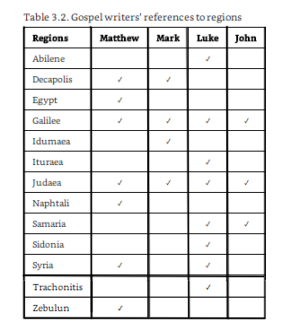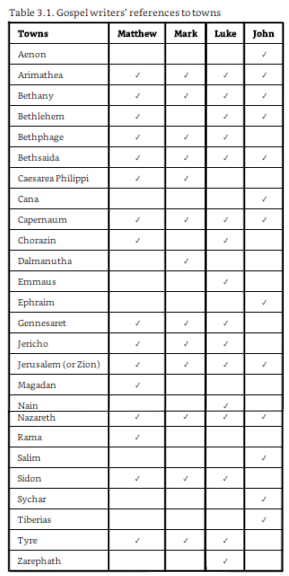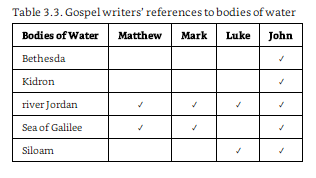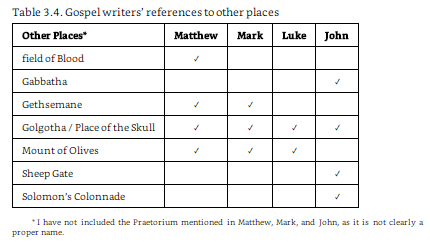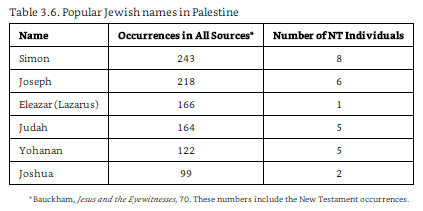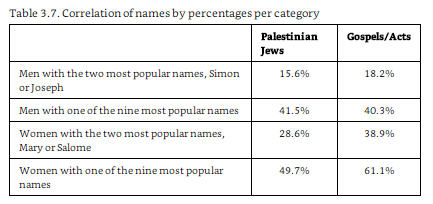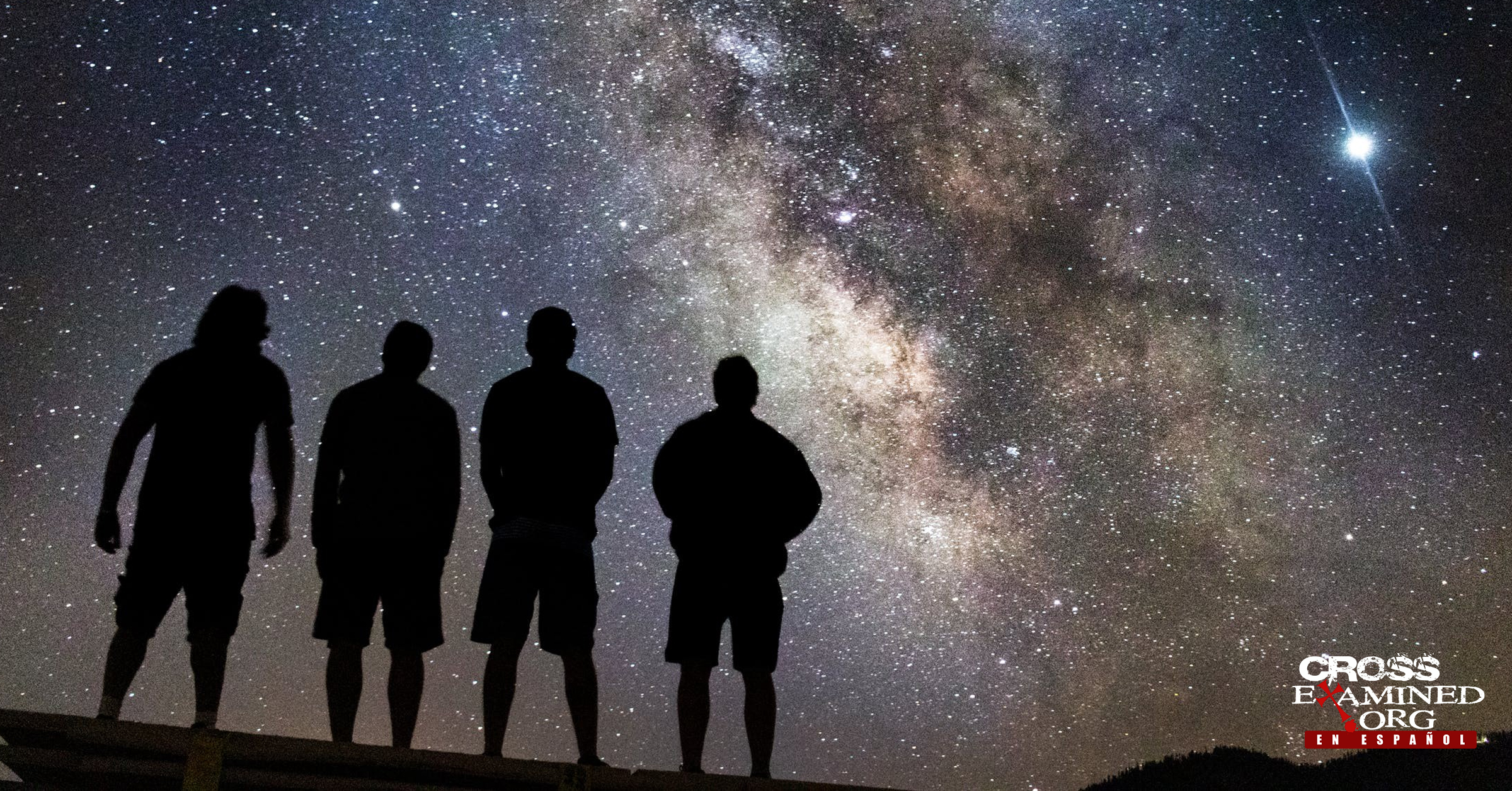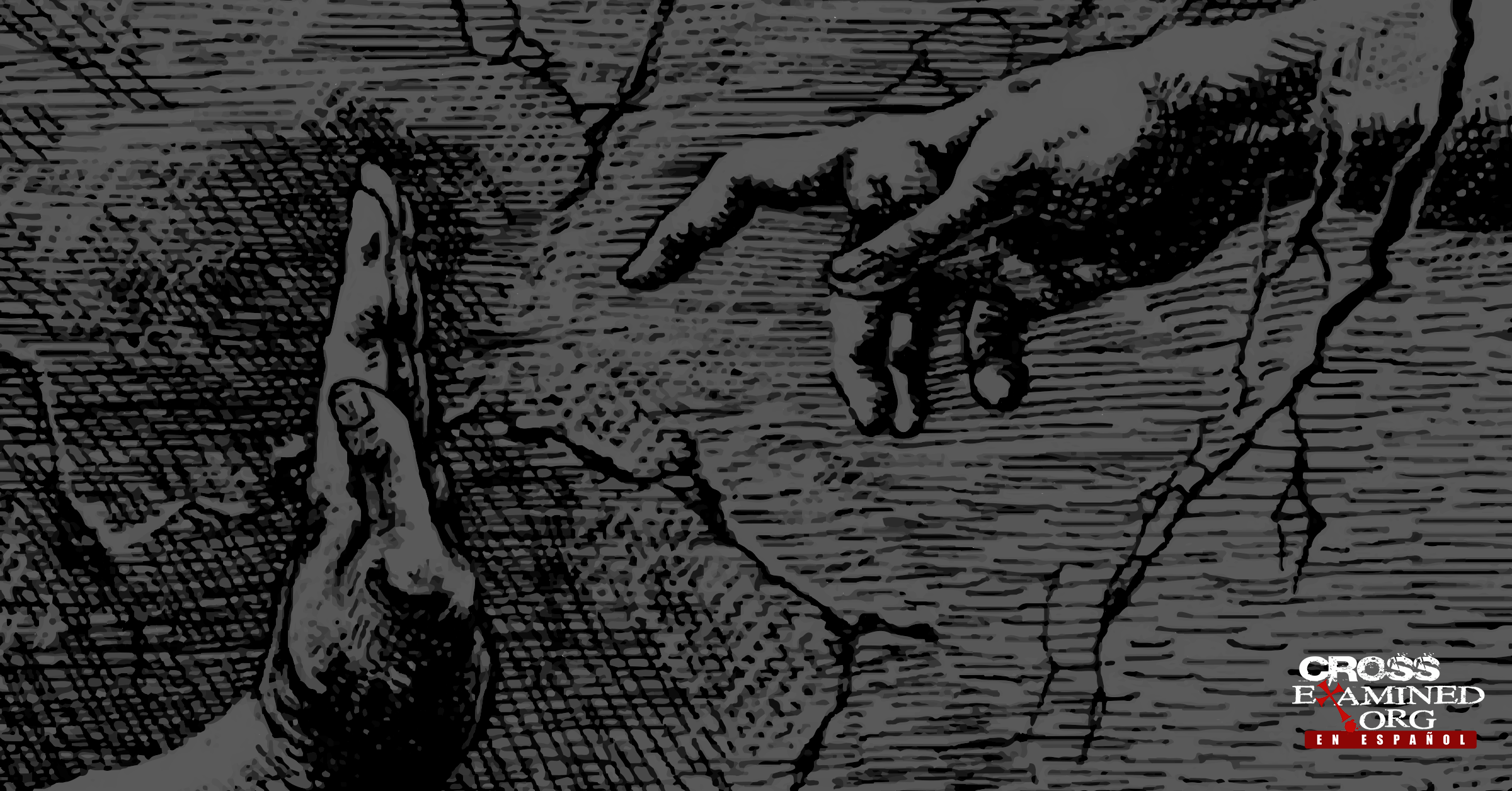By William Lane Craig
SUMMARY
Whether God is timeless or temporal depends on whether an A-Theory or a B-Theory of time is correct, where the former presents temporal facts and the latter only timeless facts. Given the superiority of the A-Theory, it follows that God is temporal. But since the Special Theory of Relativity relativizes simultaneity to reference frames, the question arises of what “now” is God’s “now.” To answer that question, we must distinguish between time and our measurements of time. Relativity concerns only measured time and therefore does not affect God’s actual time. How does God’s time relate to measured time? Contra Alan Padgett, God’s time must coincide with a measured time, most plausibly the cosmic time of the General Theory of Relativity.
Introduction
While some of the traditional attributes of God, such as omnipotence or omniscience (particularly divine foreknowledge) have been exhaustively—and one is tempted to say almost exhaustively—analyzed and defended in recent philosophical literature, other divine attributes such as the eternity of God have received scant and generally superficial analysis. [1] Current discussions of the eternity of God have for the most part been conducted in almost complete ignorance of the philosophy of space and time and without any deep knowledge of the theory of relativity and its analysis of time [2] —a notable deficiency, when one thinks about it, for how can one hope to formulate an adequate doctrine of the eternity of God and its relation to time without taking into account what modern philosophy and science have to say about time?
Now Alan Padgett, a PhD candidate under Richard Swinburne, has attempted to remedy that lack by presenting, in full conversation with philosophical and scientific discussions of time, a view of divine eternity that he characterizes as “relative timelessness.” [3] As someone who has recently been working in this very area, I wish to endorse the direction in which Padgett is moving and offer some refinements to this view.
The Eternal Eternity of God: Theory A vs. Theory B of Time
Padgett rejects the classical Plotinian-Augustinian analysis of divine eternity in terms of timeless existence, a view he calls “absolute timelessness.” He regards the classical analysis as inadequate because God, in order to sustain created things, which are always changing in their ontological state, must change in his activity and therefore cannot be timeless.
What Padgett’s article does not make clear, however, is that this line of argument only carries through if one has previously committed oneself to an A-theory of time. [4] According to the A-theorist, temporal becoming is a real, objective feature of the universe; transience is essential to the nature of time, a truth expressed metaphorically by saying that time “flows.” The temporal properties of events cannot be adequately analyzed in terms of prior , simultaneous , and posterior alone, but must include references to the past , present , and future , which are not merely deictic expressions but are irreducibly temporal. The present represents the edge of becoming, and future events merely do not exist yet , but do not exist at all . By contrast, according to the B-theorist, temporal becoming is mind-dependent and purely subjective. Time does not flow, nor do things come into being, except in the sense that at one moment we are aware of them after not having been at an earlier moment. Simultaneous things with different moments on the timeline are equally existent and interrelated to each other by the prior, simultaneous and subsequent relationships to which past, present and future can be reduced. Anything that, from our perspective, existed, exists or will exist in the universe, simply exists (without temporality).
By contrast, on the A-theory of time, the concept of a timeless God who is actually related to the world seems incoherent. Since future states of the universe do not actually exist, God cannot be causing them (even timelessly) to exist; otherwise, they would in fact exist at their respective times. The same holds for past states of the universe. Thus, Aquinas’s argument that God causes timeless things to happen at their respective times only succeeds in showing that things caused by time need not exist eternally, and in fact betrays a B-theoretic view. [5] Even if God immutably wills from eternity that a temporal event exist, there must be attached to that will an exercise of divine causality at the time of the thing’s creation for it to actually happen at that time rather than existing timelessly at that time. The only way to avoid this conclusion would be to deny with Aquinas that God is really related to the world, a totally implausible system of motion that depends on an elaborate Aristotelian metaphysics. [6]
It can be plausibly argued, I think, that the A-theory of time is philosophically and theologically superior to the B-theory. Philosophically, one should agree with D. H. Mellor that “time is such a striking aspect of reality that only the most compelling argument justifies denying it: namely, that the dynamical view of time is contradictory and therefore cannot be true” [7] and then proceed to show that in fact all such attempts to provoke a contradiction, such as McTaggart’s, fail, [8] leaving us secure in our naturally intuitive understanding of the A-theory. No B-theorist, on the other hand, has successfully answered, in my view, the charge that his theory is incoherent because mental dependence on physical becoming requires real becoming in the subjective contents of consciousness. [9] In favor of theory A, one could argue that it offers the most adequate analysis of personal identity [10] and that the temporality of our language and experience is inescapable. [11]
Theologically, there seems to be one decisive reason for Christian theists to reject the B-theory, namely, that it cannot give an adequate analysis of the biblical doctrine of creatio ex nihilo . In the B-theory, creatio ex nihilo is reduced to the ontological dependence of creation on God and the space-time continuum with an edge or boundary. But creation as a whole is co-eternal with God in the sense that it exists as timelessly as He does. There is no state of affairs in the present world that consists in God existing alone without creation. But such an analysis is a wholly inadequate understanding of the biblical doctrine that the created order came into existence and was created by God. Although Aquinas (unlike Bonaventure) thought that one could not philosophically prove this aspect of the doctrine of creatio ex nihilo , he was firmly committed to it on the basis of revelation, a fact that contemporary theologians, who sometimes appeal to Aquinas to justify their undue reliance on temporal creativity ex nihilo , tend to forget. [12]
Padgett’s argument against divine timelessness, then, is valid only if the case for an A-theory is successful. What the reader of Padgett’s paper will not realize is that Padgett himself is fully aware of this point and argues for the superiority of the A-theory in his unpublished thesis. On this point, therefore, we are in fundamental agreement.
God’s time and ours
If the A-theory of time is correct, then, and God is in time, the question naturally arises in the context of the theory of relativity: “Whose time is God in?” According to that theory, events that are present to an observer in one inertial frame may be future to an observer in another inertial frame. Certain events will even occur in reverse temporal order relative to some frames compared to others. An observer at rest relative to an observer making a high-speed round trip will experience moments of time or “nows” for which there literally are no correlated simultaneous moments in the traveler’s experience. According to Einstein, neither of these perspectives is privileged, and therefore there is no absolute “now” in the universe. Absolute simultaneity has been banished from the universe in favor of simultaneity relative to a frame of reference. For example, no event occurs “now” in an absolute sense on the planet Neptune or even on the other side of the earth. For observers in relatively mobile reference frames, at this same space-time point they will draw different planes of simultaneity in space-time and thus measure different events, say, on Neptune, as occurring in their respective “nows.” But what is God’s “now”?
Ontological time and measured time
It is to the credit of Padgett’s work that he has cut this Gordian knot by distinguishing between “time” and “measured time.” [13] Time itself, according to Padgett, has to do with God’s eternal duration; measured time is clock time, time according to some metric. Padgett argues that while God is in time, he is not in any measured time, and therefore his “now” is not to be identified with any of the relative “nows” of measured time.
This distinction between ontological time and measured (or empirical) time seems to me to be an extremely important insight, which is a healthy counterweight to the universally repeated and extravagant claims that TRE has forced us to abandon: the classical views of time and space. [14] This erroneous inference rests precisely on the failure to draw the kind of distinction that Padgett has emphasized. That failure can be laid at Einstein’s door. It seems astonishing to me that anyone reading Einstein’s 1905 paper could think that Einstein proved that there is no absolute simultaneity, and that therefore time is relative to reference frames. [15] For the whole theory depends on the acceptance of Einstein’s arbitrary (and, indeed, highly counterintuitive) definition of simultaneity, [16] together with a philosophical positivism of Machian provenance [17] according to which a notion like absolute simultaneity is meaningless if it is empirically undetectable. Since the ether frame of 19th century physics could not be detected empirically, Einstein dismissed it as meaningless, along with his absolute simultaneity, which referred to events occurring simultaneously in the ether frame. By redefining simultaneity in terms of the light signal timing method, Einstein was able to give empirical meaning to the notion of simultaneity, but the simultaneity that emerges from the theory is relative due to the invariant speed of light. Since light signals are measured as having the speed c regardless of the motion of the sender or receiver of the signals, two relatively moving observers will measure the same event occurring at different times, which goes against the traditional notion of simultaneity. [18]
Anyone who is not a positivist, and therefore rejects Einstein’s definitions, would regard these relatively soulful observers as deluded because of the nature of their measurements, which cannot detect real time. [19] In a real sense, he would not regard Einstein’s theory as a theory about time and space at all, but, as Frank put it, as “a system of hypotheses about the behavior of light rays, rigid bodies, and mechanisms, from which new results about this behavior can be derived.” [20] Trapped in our locally moving frames, we may be forced to measure time by devices that are inadequate to detect real time, but that by no means implies that there is no such time. The fact that uniformly moving clocks run slowly says more about our clocks than about the nature of time. Thus, Einstein’s theory can be regarded as pragmatically useful and scientifically fruitful without having to regard absolute simultaneity and absolute time as abolished.
One might think that Einstein’s positivism was simply a historically accidental feature of the theory, but it is not part of the philosophical foundations of that theory. Such an attitude, however, would be mistaken. As J.S. Bell points out, it is primarily this philosophical positivism that serves to distinguish the Einsteinian interpretation of lavTRE from the Lorentzian interpretation, which differentiates between ontological time and measured time:
The difference in philosophy is this. Since it is experimentally impossible to tell which of two systems of uniform motion is really at rest, Einstein declares that the notions of “really at rest” and “really in motion” are meaningless. For him, only the relative motion of two or more objects in uniform motion is real. Lorentz, on the other hand, preferred to see that there does indeed exist a real state of rest, defined by the “ether,” even though the laws of physics conspire to prevent us from identifying it experimentally. The facts of physics do not force us to accept one philosophy rather than the other. [21]
Since the Lorentzian interpretation of the TER is empirically equivalent to Einstein’s interpretation, the only way the latter can rule out the former is by a positivist critique of notions of absolute simultaneity, and so on. According to Lawrence Sklar,
“Certainly the original arguments for the relativist view are riddled with verificationist presuppositions about meaning, etc. And despite Einstein’s later denial of the verificationist view, no one to my knowledge has provided an adequate account of the foundations of relativity that is not verificationist in essence.” [22] “I see no way to reject the old compensatory ether theories […] without invoking a verificationist criticism of one sort or another.” [23]
Now this constitutes a truly serious drawback of Einstein’s interpretation. As Healey observes, although positivists tried to restrict the content of scientific theories in order to ensure that they were meaningful, “more recently positivism has come under such sustained attack that opposition has become almost orthodoxy in the philosophy of science.” [24] Philosophers of religion need not be reminded of the untenability of positivism in view of their radical critique of religious language, which would regard Padgett’s distinction between God’s time and our time as cognitively meaningless.
Since God is in time, therefore, it is evident that His is not the time that is determined by Einstein’s operational definitions; subject to dilation, the relativity of simultaneity, and the reversal of events. Rather, God’s time is true A-series time, determined by the succession of events in divine consciousness and activity and characterized by the absolute “now” of the present and the edge of becoming. His is, to borrow D.H. Mellor’s phrase, “Real Temporality.”
So I think it’s rather unfortunate that Padgett chose to call his view “relative timelessness,” because it is precisely the opposite. It is God who exists in true ontological time, while finite observers, restricted to our locally moving reference frames dependent on the light signal timing of clocks, have to make do with our manufactured measured time. Contrary to Padgett, ordinary use of time concepts cannot justify calling God relatively timeless, since our intuitive view of time is an A-theoretic view, and this is precisely the time in which God lives. Thus, the view Padgett presents is better labeled “Real Temporality.”
God’s time and cosmic time
But how does God’s time relate to our own? Padgett answers that while we are in God’s time, God is not in any measured time. But this answer seems to me to be factually false. From the perspective of God in the real time of the A-series, there is an absolute present in which he is now aware of what is happening in the universe, and he is now causally causing the events in the universe. But if, as we saw in our critique of divine timelessness, God’s causally sustaining the universe in being is simultaneous with the events being sustained, then there must be an absolute cosmic “now” that describes the state of the universe as it is present to God. Future events for this moment do not exist at all, since God has not yet caused them. But is there a frame of reference in the universe that produces a measured time that can be naturally associated with the succession of such moments? Yes, there is. It is not, in fact, the inertial frame of any spatially local observer, but the reference frame of the cosmic expansion of space itself. The relativity of simultaneity depends on the assumption that there is no preferred reference frame; but if there is a preferred frame, as the Lorentzian interpretation would have it, then the relations of simultaneity in it would be absolute, and relativity would apply to all other frames. But the frame associated with cosmic expansion seems naturally suited to such a privileged position. Michael Shallis explains:
However, it is also possible to take a single clock as a standard, to define a universal time coordinate and to relativize everything to it […] Of course, the choice of a coordinate time is to some extent arbitrary; in principle, one could take any clock as a standard. But in a cosmological context, it is natural to take as a standard a clock whose motion is typical or representative of the motion of matter in general, one that simply “advances,” so to speak, with the general expansion of the universe. [25]
We must not forget that Einstein proposed his Special Theory long before cosmic expansion was discovered, so that in the absence of the characterless and dying ether, there seemed to be no empirical basis for positing any universal frame beyond the multitude of locally moving frames. But with the discovery that the universe is expanding, it became possible to imagine a universal frame of reference by imagining observers associated with fundamental particles (i.e., galaxies or galaxy clusters) having mutual recessional velocities. In fact, the “gas” constituted by these fundamental particles is at rest relative to the expansion of cosmic space and is therefore an ether. As early as 1920, Eddington acknowledged that the General Theory of Relativity postulated a kind of cosmic time, but he objected that such cosmic time was unknowable and therefore irrelevant to observers in moving local frames. [26] Within a few years, however, the expansion of the universe predicted by Einstein’s field equations (minus the cosmological constant) had been confirmed by observational astronomy, thus providing a sort of cosmic clock that the abandonment of the aether theory seemed to have served no practical purpose. Of course, it might still be objected that this universal time is unknowable and therefore irrelevant. But not only does this objection seem to be infected with a defunct verificationist attitude, it does not even seem to be true. Recent observations have revealed an apparent anisotropy in the cosmic microwave background radiation that is due to the motion of the earth relative to the cosmic reference frame, resulting in what has been characterized as a “new aether wind” of about 360 kilometers per second. [27] Comments by P.C. W. Davies,
At any given location in the universe, there is only one reference frame in which the universe is expanding isotropically. This privileged reference frame defines a privileged time scale (the time indicated by a clock at rest in that frame). Two separate locations have their privileged reference frames in mutual motion, due to the expansion of the universe. However, the time measured by the entire collection of imaginary standard clocks is obviously correlated such that the global condition (e.g., the average separation of two galaxies) of the universe appears the same at times equal to those recorded by each privileged clock (assuming they are all correctly synchronized). Fortunately, the Earth moves very slowly relative to the local privileged frame in our vicinity of the universe, so Earth time is a fairly accurate measure of cosmic time. [28]
Not only, then, is there cosmic time, but we even have a pretty good idea of what time it is.
Given the existence of this cosmic time, I believe that the moments of God’s actual time, the A-series—while perhaps not identical to the moments of measured cosmic time—do coincide. God’s ontological time clearly exceeds the cosmic time by which the former could have preceded the latter (imagine God leading creation by counting “1, 2, 3, … fiat lux !”), but once cosmic time comes into existence, its moments would coincide with the moments of actual time. How could they fail to do so? If the duration of the universe is measured in cosmic time at 15 billion years from the singularity, isn’t the duration of God’s creative activity in actual time the same duration? In God’s “now” the universe has (present time) certain specific and unique properties, for example, a certain radius, a certain density, a certain background temperature, etc., but in the cosmic “now” it has all the identical properties, and so it is with each successive “now.” Is it not obvious that these “nows” coincide and designate the same present?
Perhaps we can state this consideration more formally by the following principle:
P : For any recurrent, constantly changing universe U and time intervals x , y large enough to allow change, if the physical description of U at x is the same as the physical description of U at y , then x and y coincide.
Since in real time there is a temporal interval or duration during which a certain physical description of the universe is true, and since in cosmic time there is a similar interval, it follows from P that those intervals of real and cosmic time coincide. Note that the argument makes no reference to any particular metrication of time and therefore does not depend on it. It seems to me, then, that real time and cosmic time should naturally be regarded as coinciding since the beginning of cosmic time.
Padgett’s objections to this understanding of the relationship of God’s time to measured time appear to be rather weak. He first objects that God is not subject to the laws of nature, as anything in measured time must be. He argues that since God acts freely rather than uniformly and has the power to alter the laws of nature, he cannot be in measured time. But why could not God’s time contain its own intrinsic metric, as Newton believed, that physical clocks provide a more or less “sensible” measure? [29] In this case, an ideal physical clock would measure God’s time. Furthermore, the premise that anything in measured time must be subject to the laws of nature is a non sequitur. It is the measuring instrument , i.e. the clock , that must be subject to the laws of nature, not the object of measurement, which could be a totally random process. To say that 15 billion years ago God created the universe is not to say that God is subject to the laws of planetary motion, but simply to apply to God’s time a conventional metric that marks a duration equal to the duration of the earth’s orbit around the sun. That is to say that the duration during which God thought or did something is equal to, say, the duration it would take the earth to complete a certain number of orbits. Even on a purely mundane level, global proper time near the singularity is not a direct count of simple, real phenomena, since the earth will not have actually completed, say, 1010 orbits in the last 1010 years and even a cesium atomic clock would not have ticked at very early intervals. Rather, global proper time is an elaborate mathematical extrapolation of physical phenomena. [30] Similarly, any arbitrarily chosen metric can be applied to the duration of God or the universe.
Padgett anticipates such an objection, supposing that the universe might be thought of as acting as a kind of clock to measure the length of God’s time. But let’s be quite clear about this, for the universe does not merely act as a clock for God. The universe is a clock; it is God’s clock. For example, some conventional unit of God’s time might be the time it takes for the radius of the universe to increase by a certain factor. Padgett retorts that it does not follow that because two events e1 and e2 are one hour apart in one frame of reference, they are one hour apart in God’s time. He appeals to time dilation between relatively moving frames to show that the duration between two identical events can be measured diversely. But the analogy fails here, for we are not comparing two relatively moving frames using light signals to synchronize their respective clocks. Since God is actually related to the universe and not moving relative to it, there is no basis for any relativity of simultaneity between His present and the cosmic present. God is a disembodied Mind that uses a physical clock.
Padgett objects that cosmic time is contingent and applies only to our universe. We cannot, therefore, suppose that it applies to anything beyond it. But we have no reason, biblical or philosophical, to think that there are other universes. Parsimony justifies the assumption that ours is the only universe. In that case, it only follows that actual time and cosmic time contingently coincide ; there are possible worlds in which they do not. [31] But why is that an objection? Since God’s decision to create was free, cosmic time is essentially contingent; indeed, I should say that even actual time is contingent. [32] But since cosmic time exists, there is no objection to holding that God’s time contingently coincides with it for the duration of the cosmos.
Padgett’s second objection to this view is that measured time is relative to a particular frame of reference, which need not apply to God. He argues that because God transcends space, his life need not occur in our four-dimensional space-time continuum. Therefore, his life is not limited to the temporal dimension of our space-time.
This objection raises some interesting questions about divine omnipresence, [33] which we can give up. One might also question whether the objection has sufficient insight into the difference between parameter time and coordinate time. [34] In Newtonian mechanics, time functions as a parameter, which is entirely independent of space. However, in the theory of relativity, time functions not only as a parameter, but also as a coordinate that is joined with spatial coordinates. However, that theory is susceptible to reformulation entirely in terms of parameter time. One might therefore argue that God is in measured time, but that means therefore parameter time, not coordinate time, so that God’s independence from space is preserved. However, the essential point to be made is that God’s time can be measured by coordinate time without His being also measured by spatial coordinates, because on the understanding I have proposed, moments of ontological time can be thought of as coinciding with moments of measured time without being identical to them. Thus, even if it is true that a being whose duration is measured exclusively by coordinate time must also have spatial coordinates, it does not follow that a being whose duration in ontological time coincides with its duration in measured time must also be in space. Again, the fact that this coincidence is contingent constitutes no objection, but it is in fact implied by traditional theism.
It seems to me, therefore, that Padgett’s view needs to be refined with respect to the relationship between ontological time and measured time, and hence between God’s time and our own. Real time is the time of the A-series in which God thinks and acts and in which things come into being; the moments of this time coincide from the beginning of the universe with the moments of cosmic time determined by ideal stationary clocks with respect to the expansion of space itself.
Conclusion
I believe, therefore, that Padgett has gone a long way toward formulating a philosophically sound and scientifically informed doctrine of divine eternity that is also faithful to biblical revelation. The philosophical and theological grounds for preferring an A-theory of time also provide justification for rejecting the Plotine-Augustinian doctrine of divine timelessness because that theory seems incompatible with the real relationship of a timeless God to the world. God thinks and acts in real time—that is, the A-series of temporal moments, in which becoming, absolute simultaneity, and absolute “now” exist—and his relationship to time must be characterized as “true temporality.” In contrast, by conventionally defining simultaneity in terms of the light-signal method of clock synchronization and by adopting arbitrary metrics to quantify time, men have developed a measured time, which is extremely malleable to relatively moving timekeepers. Since God is not in any inertial frame, his time, ontological time, is not subject to these effects. However, in our universe, due to its isotropic expansion from an initial singularity, there is cosmic time that records successive moments in the history of the universe. Although ontological time may precede (or succeed) measured cosmic time—whether ontological time has a beginning is an issue we have not sought to judge in this article—nevertheless, the moments of ontological time and cosmic time will coincide for the duration of cosmic time, since they refer to the identical succession of states in the universe. To object that this makes God subject to the laws of nature is a non sequitur , since it is our clocks that must be subject. To object that this view traps God in spacetime is equally mistaken, since ontological time only contingently coincides with cosmic time, so that God in ontological time can exist at a time that coincides with a measured moment of time without having to possess coordinate space as well. One of the interesting implications of this understanding is that a Lorentzian rather than an Einsteinian interpretation of the special theory of relativity is correct: there is a preferred reference frame in which light propagates with speed c , and relativistic effects are due to local motion relative to this frame. With these refinements, Padgett’s view of divine eternity appears to be coherent and plausible.
Grades
[1] Note that the literature on divine eternity is so sparse that it did not even merit a mention in Philosophy of Religion: an Annotated Bibliography of Twentieth Century Writings in English (New York: Garland Publishing, 1978).
[2] See, for example. Nelson Pike, God and Timelessness (New York: Schocken Books, 1970); Stephen T. Davis, Logic and the Nature of God (Grand Rapids, Mich.: Wm. B. Eerdmans, 1983); Eleonore Stump and Norman Kretzmann, “Eternity,” Journal of Philosophy 78 (1981):429-58.
[3] Alan Padgett, “God and Time: Toward a New Doctrine of Divine Timeless Eternity,” Religious Studies 25 (1989): 209-15); see further idem , “Divine Eternity and the Nature of Time” (Ph.D. thesis, Oxford University, 1988) [now published as God, Eternity, and the Nature of Time (New York: St. Martin’s, 1992)].
[4] The distinction between the A and B series of temporal events was originally made by J. M. E. McTaggart, The Nature of Existence , 2 vols., ed. C. D. Broad (Cambridge: Cambridge University Press, 1927; rep. ed.: 1968), Book V, chs. 33; for discussion, see C. D. Broad, Examination of McTaggart’s Philosophy , 2 vols. (Cambridge: Cambridge University Press, 1938; rep. ed.: New York: Octagon Books, 1976), 2:265–344. See also Richard Gale, “Introduction” to Section II: “The Static versus the Dynamic Temporal,” in The Philosophy of Time , ed. R. Gale (London: Macmillan, 1968), pp. 65–85.
[5] On the connection between classical conceptions of divine eternity and a B theory of time, see Wm. L. Craig, The Problem of Divine Foreknowledge and Future Contingents from Aristotle to Suarez , Brill’s Studies in Intellectual History 7 (Leiden: E. J. Brill, 1988), pp. 116–21; idem, “St. Anselm on Divine Foreknowledge and Future Contingency,” Laval théologique et philosophique 42 (1986):93–104. See also Delmas Lewis, “Eternity, Time and Tenselessness,” Faith and Philosophy 5 (1988):72–86.
[6] For a brief critique, see Wm. L. Craig, “God, Time, and Eternity,” Religious Studies 14 (1979):497-503.
[7] D.H. Mellor, Real Time (Cambridge: Cambridge University Press, 1981), p. 5.
[8] See refutation in Paul Horwich, Asymmetries in Time (Cambridge, Mass.: MIT Press, 1987), pp. 26–27. Horwich’s own rejection of A-theory is based on the mistaken view that an A-theory entails the denial of semantic bivalence for contingent future propositions.
[9] Such an objection needs to be formulated more carefully, but is detailed in Milic Capek, The Philosophical Impact of Contemporary Physics (Princeton: D. Van Nostrand, 1961), p. 165; idem, “Introduction,” in The Concepts of Space and Time , ed. M. Capek, Boston Studies in the Philosophy of Science 22 (Dordrecht: D. Reidel, 1976), p. XLVII; Frederick Ferré, “Grünbaum on Temporal Becoming: A Critique,” International Philosophical Quarterly 12 (1972):432-33; James A. McGilvray, “A Defense of Physical Becoming,” Erkenntnis 14 (1979):275-99.
[10] See Ronald C. Hoy, “Becoming and Persons,” Philosophical Studies 34 (1978):269-80.
[11] See Quentin Smith, “Problems with the New Tenseless Theory of Time,” Philosophical Studies 52 (1987):371-92 and the literature cited therein.
[12] See, for example, John Polkinghorne, “Cosmology and Creation,” paper presented at the conference “The Origin of the Universe,” Colorado State University, Ft. Collins, Colorado, September 22-25, 1988. The proceedings will probably be published by SUNY Press.
[13] This much-misunderstood distinction was carefully worked out by Newton himself in the Scholium to the Definitions at the beginning of his Principia (Isaac Newton, Sir Isaac Newton’s ‘Mathematical Principles of Natural Philosophy’ and his ‘System of the World’, trans. Andrew Motte, rev. with appendix by Florian Cajori, 2 vols. [Los Angeles: University of California Press, 1966], pp. 6–12). Cf. M. F. Cleugh, Time and its Importance in Modern Thought (London: Methuen, 1937), pp. 29–67; Philipp Frank, Philosophy of Science (Englewood Cliffs, NJ: Prentice-Hall, 1957), pp. 140–43; Herbert Dingle, “Time in Philosophy and Physics,” Philosophy 54 (1979):99–104.
[14] Typical are Hawking’s recent statements: “…the theory of relativity puts an end to the idea of absolute time […] The theory of relativity forces us to fundamentally change our ideas of space and time.” (Stephen Hawking, A Brief History of Time [New York: Bantam Books, 1988], pp. 21, 23).
[15] A. Einstein, “On the Electrodynamics of Moving Bodies,” in The Principle of Relativity , trans. W. Perrett and GB Jeffery with notes by A. Sommerfield (New York: Dover Publications, 1952), pp. 37-65.
[16] Two spatially separated events are simultaneous if they both occur at the same clock hours as recorded by two synchronized clocks A and B situated respectively at the locations of the events, where A and B are stationary relative to each other and B reads the same as A at the temporal midpoint of the time required for A to send a light signal to B and receive it back. The assumption is that A and B are not moving with reference to the ether-frame, so the travel time of the signal is no longer (or shorter) on the return leg of its journey. Now, clearly, unless one is an operationalist, this is not what is meant by simultaneity, and unless one is a positivist, the underlying assumption of the definition is entirely gratuitous.
[17] The influence of Mach’s positivism on Einstein and his Special Theory of Relativity is widely acknowledged by historians of science, but surprisingly rarely discussed by philosophers exploring the philosophical foundations of that theory. For discussion, see G. Holton, “Mach, Einstein, and the Search for Reality,” in Ernst Mach: Physicist and Philosopher , Boston Studies in the Philosophy of Science 6 (Dordrecht: D. Reidel, 1970), pp. 167-77; P. Frank, “Einstein, Mach, and Logical Positivism,” in Albert Einstein: Philosopher-Scientist, ed. P. A. Schilpp, Library of Living Philosophers 7 (LaSalle, Ill.: Open Court, 1949), pp. 271-86; H. Reichenbach, “The Philosophical Significance of the Theory of Relativity”, in Albert Einstein , pp. 289-311.
[18] For alternative operational definitions of “simultaneity” and “synchronization” that preserve absolute simultaneity, see T. Sjödin, “On the One-Way Velocity of Light and its Possible Measurability”, paper presented at the conference Physical Interpretations of Relativity Theory , British Society for the Philosophy of Science, Imperial College, London, September 16–19, 1988.
[19] This is, in fact, the modern Lorentzian interpretation of SRT, which holds that velocity affects our measuring devices, so that moving rods and clocks contract slowly. Such an interpretation does not commit us to a substantive ether, but merely to an ether- frame , i.e. a privileged frame of reference. The fact that the Lorentzian interprets longitudinal contraction and time dilation as not merely apparent but real cannot be cited as a disadvantage of the theory, since the Einsteinian must also postulate real contraction and dilation (see Peter Kroes’ paper “The Physical Status of Time Dilation within the Special Theory of Relativity,” at the conference mentioned in note 18; see also Dennis Dieks, “The `Reality’ of the Lorentz Contraction,” Zeitschrift fur allgemeine Wissenschafts-theorie 15/2). The difference between the two on this point is that the Lorentzian offers some explanation for these effects, while the Einsteinian does not. The decision between a Lorentzian and an Einsteinian interpretation of SRT will probably depend on whether God’s time can plausibly be interpreted to coincide with some coordinate time, which would therefore be the privileged time of the aether frame.
[20] Frank, Philosophy of Science , p. 140.
[21] J. S. Bell, “How to Teach Special Relativity,” in Speakable and Unspeakable in Quantum Mechanics , ed. JS Bell (Cambridge: Cambridge University Press, 1987), p. 77.
[22] Lawrence Sklar, “Time, reality and relativity,” in Reduction, Time and Reality , ed. R. Healey (Cambridge: Cambridge University Press, 1981), p. 141.
[23] Ibid., p. 132
[24] R. Healey, “Introduction,” in Reduction, Time and Reality , p. vii.
[25] Muchael Shallis, “Time and Cosmology,” in The Nature of Time , ed. Raymond Flood and Michael Lockwood (Oxford: Basil Blackwell, 1986), pp. 68-69.
[26] Arthur Eddington, Space, Time and Gravitation , Cambridge Science Classics (Cambridge: Cambridge University Press, 1987), p. 168:
In the first place, absolute space and time are restored for cosmic-scale phenomena […] The world taken as a whole has a direction in which it does not curve; that direction gives a kind of absolute time distinct from space. Relativity is reduced to local phenomena; and although this is sufficient for the theory so far described, we are inclined to look at the limitation reluctantly. But we have already insisted that the theory of relativity is not concerned with denying the possibility of absolute time, but with denying that it is concerned with any experimental knowledge that has been found; and we need not be disturbed if the conception of absolute time appears in a new form in a theory of cosmic-scale phenomena, of which no experimental knowledge is yet available.
[27] GF Smoot, MV Gorenstein, and RA Muller, “Detection of Anisotropy in the Cosmic Blackbody Radiation,” Physical Review Letters 39 (1977): 899.
[28] PCW Davies, “Space-Time Singularities in Cosmology and Black Hole Evaporations,” in The Study of Time III , ed. JT Fraser, N. Lawrence, and D. Park (Berlin: Springer Verlag, 1978), p. 76. I have corrected spelling errors in the quote.
[29] See Charles W. Misner, Kip S. Thorne, John A. Wheeler, Gravitation (San Francisco: W. H. Freeman, 1973), pp. 813-14. The authors’ attempt to criticize proper global time as inadequately physical fails to appreciate the counterfactual nature of the application of the metric; elapsed time is measured as if an atomic clock were present and running.
[30] For a helpful discussion see Peter Kroes, Time: Its Structure and Its Role in Physical Theories , Synthese Library 179 (Dordrecht: D. Reidel, 1985), p. 49.
[31] By postulating a cosmic rotation of matter, Gödel was able to work out model universes satisfying Einstein’s field equations in which there is no cosmic time (Kurt Gödel, “A Remark about the Relationship between Relativity Theory and Idealistic Philosophy”, in Albert Einstein , pp. 557–62). In such worlds, Padgett’s view would be correct. But in fact, there is cosmic time, and it naturally appears to coincide with real time.
[32] See my “God, Time and Eternity,” pp. 497-503, where I argue that God existing without creation is timeless and that He enters time at its beginning with His creation of the universe. Since creation is a freely willed act of God, the existence of actual time is therefore contingent.
[33] See, for example, Eddington’s observation:
Just as each limited observer has his own particular separation of space and time, so a being coextensive with the world might well have a special separation of space and time natural to him. It is the moment of this being which is here dignified by the title of “absolute.” (Eddington, Space, Time and Gravitation , p. 168)
[34] See Kroes, Time , pp. 60-96.
William Lane Craig is an American Baptist Christian analytic philosopher and theologian. Craig’s philosophical work focuses on the philosophy of religion, metaphysics, and philosophy of time. His theological interests lie in historical Jesus studies and philosophical theology.
Original Blog: http://bit.ly/3aWccf2
Translated by Jairo Izquierdo




